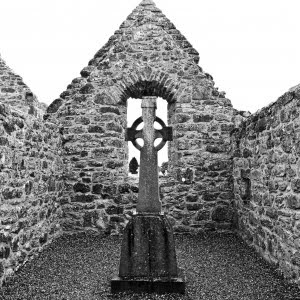
I'm conscious I haven't done much on new world wines here so was pleased to discover
Waterkloof, thanks to Louis Boutinot who had picked up on the blog and suggested I might like to see what he and his family were doing in South Africa.
The estate follows biodynamic practices and 'minimal intervention'in the winery though it isn't certified (certainly no harm in that. I've a lot of sympathy with producers who don't want to go through the paperwork or even limit their market by marketing their wine a certain way. And it appears that some of the vineyards from which they draw fruit are still conventionally farmed.)
Interestingly the
Sauvignon Blanc is their flagship wine - and it is a fine one without the aggressive herbaceous character that marks some South African sauvignons. It's rich, textured and long in the mouth with crisp citrus and passionfruit flavours. I suspect it would age well, hence, perhaps, the cork with which it's sealed rather than the screwcaps they use for the rest of the range. (Hopefully they'll comment on that) Very moreish, anyway. I found myself going back to it more than once when I was tasting through the range for an extra sip. I'd serve it slightly warmer than you would typically drink a Sauvignon Blanc with some classy seafood - maybe scallops or crab.
I also liked their
Circle of Life Red - a gutsy blend of Merlot, Shiraz, Cab Franc and Petit Verdot which we drank with an equally punchy dish of chicken and patatas bravas. It's dark and savoury, almost smokey - I thought for a minute there must be mourvèdre in there. And plummy but not in a Merlot-ish way - more like Chinese plum sauce.
I'm not quite sure why they don't put the grape varieties on the label or even on their website. Maybe because it's an unconventional blend or because they want to change it from vintage to vintage, including grapes that may not be grown organically or biodynamically though they say that they are moving the whole estate that way.
Their
2010 Circumstance Cape Coral Rosé however
is mourvèdre and very like its counterparts from Bandol: pale, dry and delicately fruity - stronger than a typical Provençal rosé. Good summer drinking - if only we were having one ...
I was less keen on the
Circle of Life White which showed rather too much oak influence for my taste though perhaps I should have decanted it as they recommended. Again they don't reveal the grape varieties online but I gather they're Sauvignon Blanc, Chenin Blanc and Semillon.
Although the wines taste relatively mainstream (I'd give them all a 'green light' under this traffic lights system I'm still trying to get off the ground) what's interesting about the estate is the seriousness with which they take the natural winemaking agenda. For example they use Percheron horses to plough the vineyards and have a goal of getting rid of their tractors by 2013. They also keep chicken, sheep and Dexter cattle on the farm to graze the vineyards and provide manure. The wines are made with wild yeasts and are not acidified (relatively unusual in South Africa).
The estate is owned by importer Paul Boutinot so the wines are in pretty wide distribution in the UK (look them up on wine-searcher.com).
Readmore »»
 A truly lovely Fleurie from Jean Foillard last night, the essence of what you - or at least I - want from Beaujolais. As well it might be. I bought it in a fit of extravagance from The Sampler in London when I was ordering some Dard et Ribo's (also painfully expensive) and now see it was £29. Still, what I tell myself in these moments of self-flagellation is that if I'd seen it on a wine list at £29 I'd have jumped at it. So that's fine then, isn't it?
A truly lovely Fleurie from Jean Foillard last night, the essence of what you - or at least I - want from Beaujolais. As well it might be. I bought it in a fit of extravagance from The Sampler in London when I was ordering some Dard et Ribo's (also painfully expensive) and now see it was £29. Still, what I tell myself in these moments of self-flagellation is that if I'd seen it on a wine list at £29 I'd have jumped at it. So that's fine then, isn't it?






























